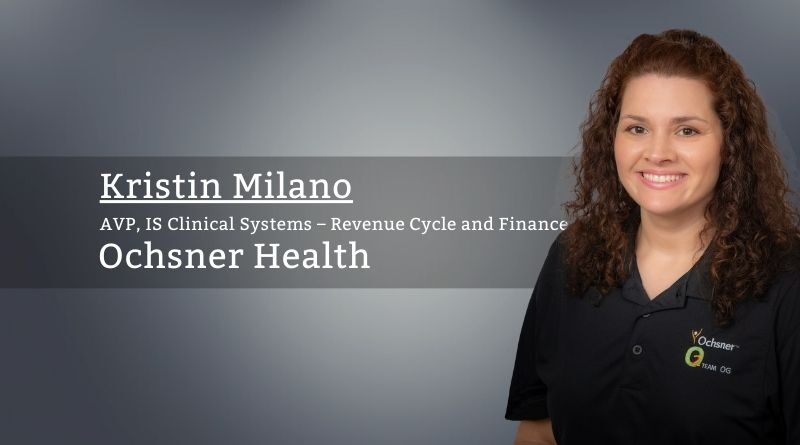Collaborative Partnership Model for a Successful Revenue Cycle Automation Team
By Kristin Milano, AVP, IS Clinical Systems – Revenue Cycle and Finance, Ochsner Health
We are all tasked to do more complex work as we face staff challenges across the healthcare industry. Our team at Ochsner Health has been working internally and with our vendor partners collaboratively to elevate the work that our staff does. At the same time, we are automating work within our revenue cycle that does not require human intervention. The road to automation was sometimes bumpy, but we got here utilizing our information services guiding principles and organizational values. I’ll share our best practices to help your team as you work through the process.
As an organization, we view automation not just as bots, but as any creation of efficiencies in the process using technology. This can include interfaces, functionality within our EMR, and vendors outside of our EMR. We also utilize bots via an internal and external automation team.
Critical to our success as a revenue cycle automation team has been our partnership between IS team, revenue cycle team, and vendors. Our best ideas come from our team. We work with our operational teams to gather ideas for optimizing existing EMR build as often as we can. As an Ochsner team, we work together to govern what items should be automated and align with our strategy as well as our values and guiding principles. Looking back, our team agrees that we could have better defined the strategy for the external automation team earlier in the process. This led to lots of discussions regarding the scope of the bots in our EMR. It is worth suggesting that your team have those discussions early to decide the limits of automation in your system with your legal and compliance teams and what your appetite for risk will be. As an organization, we ultimately landed on having our bots work through low-risk and high-reward projects.
We have found that having a project manager with an IS and revenue cycle background has been helpful in holding teams accountable to tasks and understanding the complexities of these projects.
We also review the ROI for any automation. As an organization, we do time studies for the work being automated. Sometimes, based on these studies, it has not made sense to automate due to the limited ROI. A lesson learned for our team is that the ROI should take into consideration the added costs that may be incurred by your information services team for quality assurance, interfaces, reporting, or additional staff to monitor the automation vendor or your EMR. You will also want to account for ongoing maintenance related to system upgrades and testing. As your system changes, your bots’ access to the system will need to change.
As it relates to a bot’s access to the EMR, we have taken the approach that a bot should have only the minimum necessary access to the record and perform the necessary actions. This has its pros and cons. The pros are that the bot cannot create new patients or unnecessary actions. Another pro is that because our workflows are standardized, we can provision new bots to do the same workflow for another site quickly. We recently did this for large-scale deployment following testing. The cons can be that creating user templates and additional access sometimes takes longer than our revenue cycle partners would like.
It is also important that your organization have safeguards in place for data governance. As mentioned above, quality assurance is important for automation as this employee works a longer shift than any of your others. Oversight is critical at all stages. Your organization will need to make sure that the vendors you are working with meet all requirements for data sharing as they will be managing a large amount. All new applications at our organizations must be reviewed for information security safety and any vendor we share data with must also be reviewed.
Maintenance of our automation programs are just as important as implementation and governance. Our EMR is updated at least twice yearly, but also takes system updates between that timeframe. As changes are made, our IS and revenue cycle teams work with vendors to do regression testing on our bots and other automation to ensure that they will work with the changes to the system. Therefore, it is also critical that you create a robust testing, quality assurance, and notification process and a business continuity plan in the case of downtimes. Even our bots have sick days.
As we work with many vendors and teams to make revenue cycle automation successful, project management is key. We have found that having a project manager with an IS and revenue cycle background has been helpful in holding teams accountable to tasks and understanding the complexities of these projects. Our project manager regularly leads meetings with technical stakeholders, vendors, and senior leaders. That person also documents successes and opportunities in progress reports.
As your organization works on revenue cycle automation, I hope these best practices are helpful in making work easier and more efficient for your teams.



